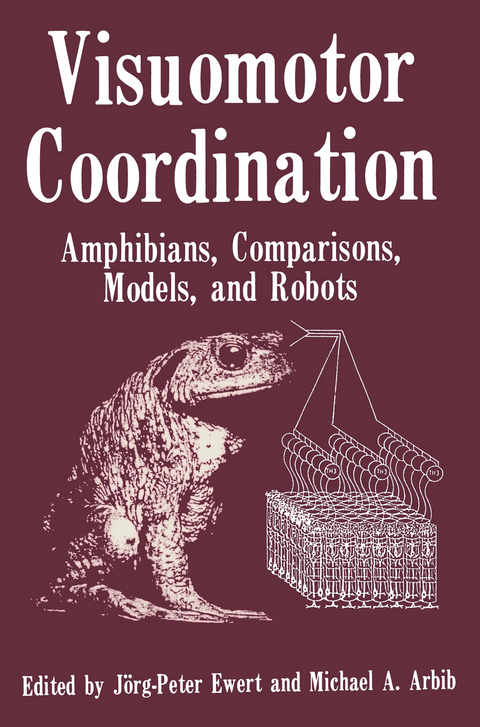
Visuomotor Coordination
Springer-Verlag New York Inc.
978-1-4899-0899-5 (ISBN)
I: Introduction.- Experimentation and Modeling: An Introductory Discussion.- II: An Opening Perspective.- The Release of Visual Behavior in Toads: Stages of Parallel/Hierarchical Information Processing.- Visuomotor Coordination: Neural Models and Perceptual Robotics.- III: Cellular Mechanisms in Tectum and Pretectum.- Cellular Architecture and Connectivity of the Frog’s Optic Tectum and Pretectum.- Morphological and Physiological Studies of Tectal and Pretectal Neurons in the Frog.- Toward an Identification of Neurotransmitters in the Frog’s Optic Tectum.- Retina and Optic Tectum in Amphibians: A Mathematical Model and Simulation Studies.- The T5 Base Modulator Hypothesis: A Dynamic Model of T5 Neuron Function in Toads.- IV: The Role of Visual Centers.- Compensation of Visual Background Motion in Salamanders.- Nucleus Isthmi and Optic Tectum in Frogs.- Why Cortices? Neural Networks for Visual Information Processing.- Invariances in Pattern Recognition.- Perception by Sens orimotor Coordination in Sensory Substitution for the Blind.- V: The Visuomotor Interface.- Schema Theory as a Common Language to Study Sensorimotor Coordination.- Behavior-Correlated Properties of Tectal Neurons in Freely Moving Toads.- Visual Integration in Bulbar Structures of Toads: Intra/Extra-Cellular Recording and Labeling Studies.- Organization in the Sensorimotor Interface: A Case Study with Increased Resolution.- How to Transform Topographically Ordered Spatial Information into Motor Commands.- VI: Motor Control.- In Search of the Motor Pattern Generator for Snapping in Toads.- Wiping Reflex in the Frog: Movement Patterns, Receptive Fields, and Blends.- Pattern Generation for Walking Movements.- Neuroscience in Motion: The Application of Schema Theory to Mobile Robotics.- SensorimotorIntegration in Robots.- VII: Arousal, Habituation, Conditioning.- Central Representation of Arousal.- Functional Brain Circuitry Related to Arousal and Learning in Rats.- Stimulus-Specific Habituation in Toads: 2DG Studies and Lesion Experiments.- Visual Associative Learning: Searching for Behaviorally Relevant Brain Structures in Toads.- Learning and Memory in the Toad’s Prey/Predator Recognition System: A Neural Model.- Telemetric Transmission System for Single Cell Studies in Behaving Toads.- Functional Neural Systems Analyzed by Use of Interregional Correlations of Glucose Metabolism.- Neural Models, Rana and Robots.
| Zusatzinfo | XXXI, 923 p. |
|---|---|
| Verlagsort | New York |
| Sprache | englisch |
| Maße | 155 x 235 mm |
| Themenwelt | Mathematik / Informatik ► Informatik ► Theorie / Studium |
| Informatik ► Weitere Themen ► Bioinformatik | |
| Naturwissenschaften ► Biologie ► Humanbiologie | |
| Naturwissenschaften ► Biologie ► Zoologie | |
| ISBN-10 | 1-4899-0899-4 / 1489908994 |
| ISBN-13 | 978-1-4899-0899-5 / 9781489908995 |
| Zustand | Neuware |
| Haben Sie eine Frage zum Produkt? |
aus dem Bereich


